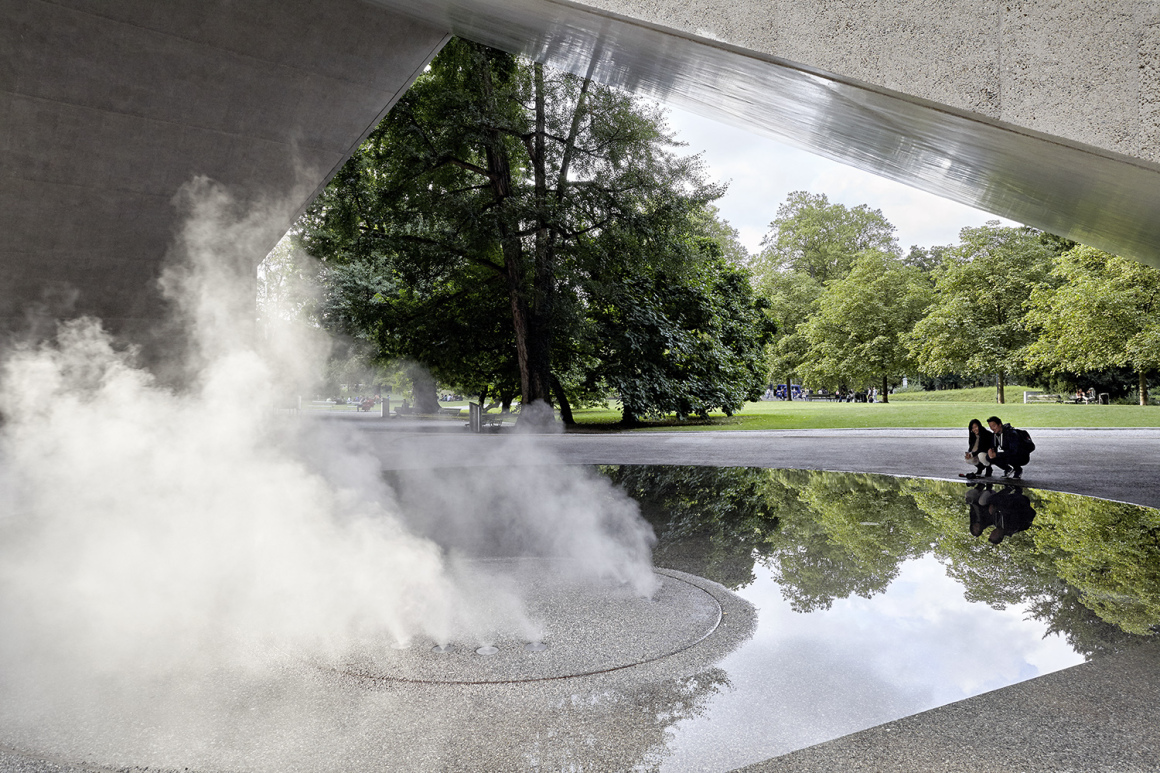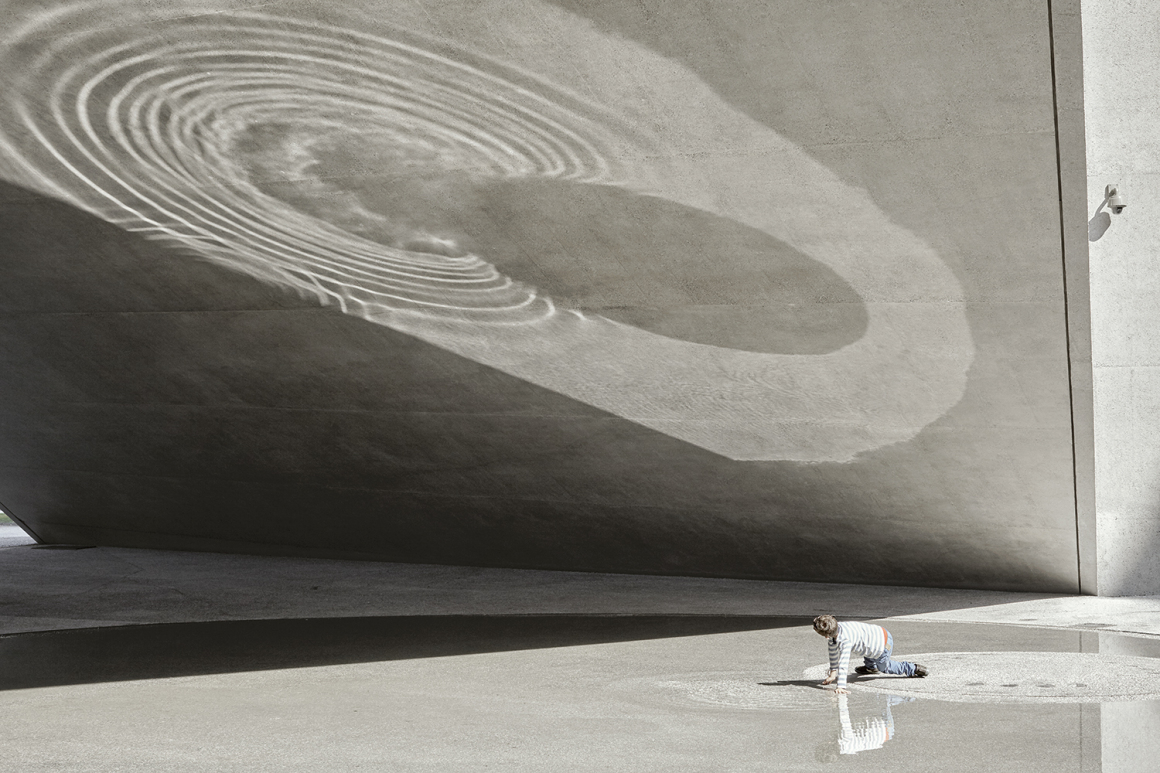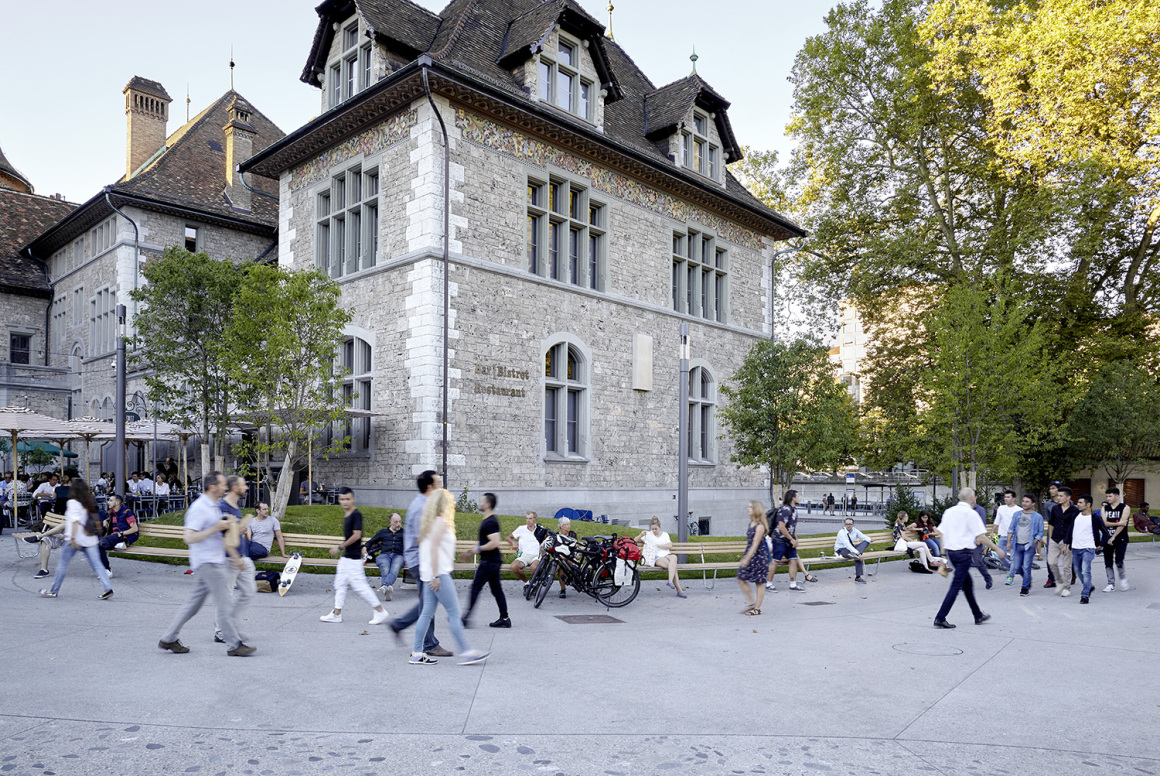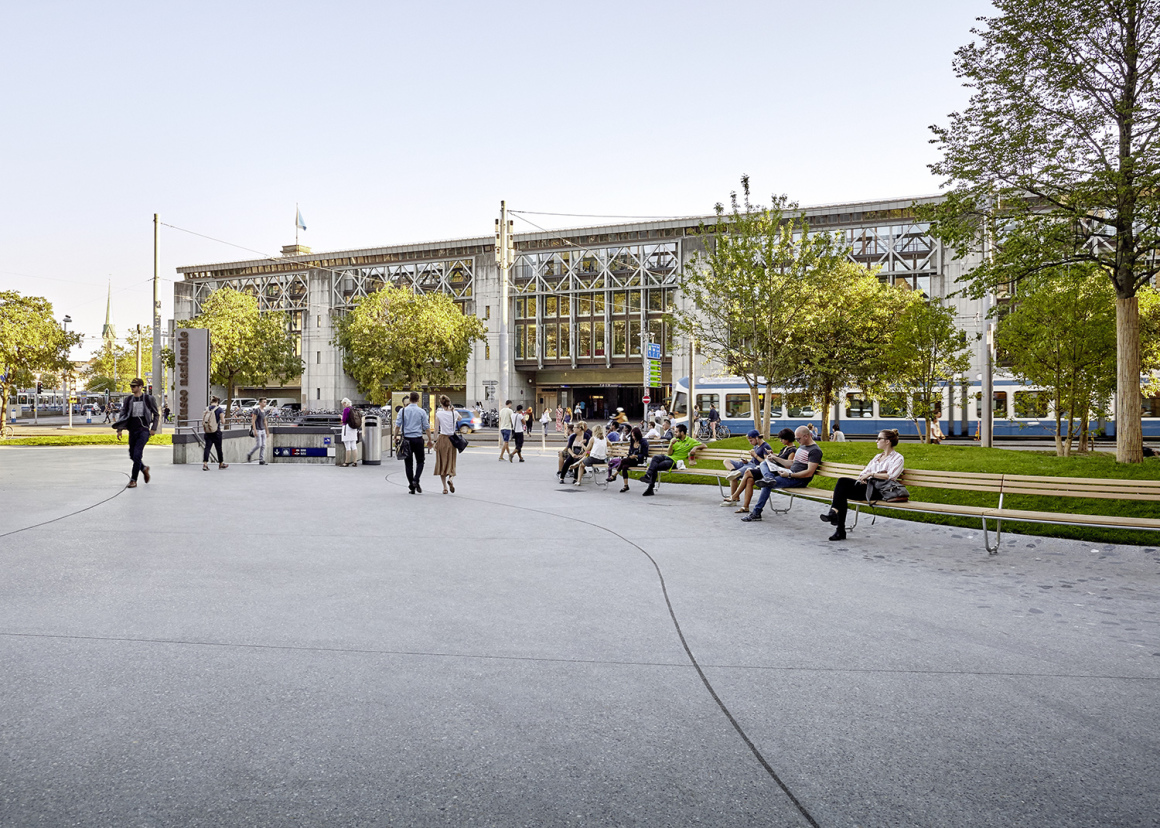本文由 Vogt Landscape Architects 授权mooool发表,欢迎转发,禁止以mooool编辑版本转载。
Thanks Vogt Landscape Architects for authorizing the publication of the project on mooool. Text description provided by Vogt Landscape Architects.
Vogt: 若你来到苏黎世火车总站,便意味着你来到了当地著名的普拉茨匹茨公园的入口。这个公园曾经是一个用作射击和公共休闲的牧场,后来逐渐变成了巴洛克式的游乐场空间,然而在20世纪80年代,公园声名狼藉,当时它作为毒品公开聚集地,曾被戏称为“针头公园”,直到1993年,公园重新修复,再次面向公众开放。这次国家博物馆的扩建则揭示了这个公园的多面性,并以景观的形式展现在游客面前。
该基地的特色在于场地中高大的梧桐树,它们约有两百年的树龄,是当地河流和城市景观的一部分。当梧桐树冠投影在河面上,不禁让人联想起自然原始的克罗地亚凉爽河谷,以及欧洲各大城市在街道和水路两旁种植梧桐树的传统。
Vogt: Arriving at Zurich’s main station brings you right to the doorstep of its most famous park: the Platzspitz. Once a pasture used as commons and shooting ground, and subsequently a baroque pleasure grove, in the 1980s the park degenerated into notoriety, when it was dubbed “Needle Park,” the center of the open drug scene. Since its rehabilitation in 1993, the park has once again been open to the public. The extension of the National Museum has revealed the multifaceted nature of the place and made it visible.
Characteristic of the site are its mighty plane trees, which are some two hundred years old and part of both the riverine landscape and the townscape. While the canopy of their branches projecting over the river evokes images of pristine locations in Croatia’s cool river valleys, the plane trees also recall the tradition of tree-lined streets and waterways in Europe’s major cities.

直到最近,这些梧桐树逐渐变成了城市空间中最具代表性的传统主题。站定在公园入口的它们,几十年来一直以其茂密的树冠为这个原本不起眼、简单的喷泉提供荫凉。它一直默默守护着弯腰喝水的路人,但这一切却随着树木的蓬勃生长逐渐远去了——这种短暂的亲密关系,不得不在几十年之后宣告结束。
Until recently, the most famous of these plane trees represented a special topos within the urban space. Located directly at the entrance to the park, it has provided shade to the otherwise rather inconspicuous and simple fountain with its delicate sculpture of Flora for many decades. The figure that passersby bow to while drinking the spring water was protected by the impressive trunk and the overhanging crown, but slowly pushed aside by the tree’s vigorous growth—a temporary relationship that had to end after decades of intimate closeness.

这对脸上涌现着难以置信表情的情侣,恰是不同城市文化层次的体现:不仅是能在公共场所获得免费饮用水,还可以赏玩这些景观空间,以及最后对“城市的本质”的表达。
This unlikely couple revealed different levels of urban culture: not only the access to free drinking water in public space, but also the play with scales, and, above all, “the nature of the city.”


当然这些方面在公园其他地方也有体现:利马特清澈的淡绿色湖水,在人工建造的堤岸之间平缓地流动着,而在这几米远的地方,每当洪水泛滥时,凶猛的湖水都会在河床上冲刷出棕灰色的沉积物。从前,正是这些河流沉积物形成了普拉茨皮茨公园:现在则由浇灌、打磨和压实的混凝土,形成博物馆广场的地表面。
This aspect can also be found somewhere else: The clear, greenish water of the Limmat moves sedately in a controlled flow between artificially constructed banks, while, a mere few meters away, the wild Sihl washes brownish-gray sediment in its riverbed through the city whenever it floods. Once, sedimentary river-terrace deposits led to the creation of the Platzspitz: these aggregates, now bound in concrete, have been sanded and compacted to form the surfacing for the museum square.

苏黎世的崎岖地貌丰富了火车主站大厅,但这无法完全弥补苏黎世车站广场的不足。到了晚上车站大厅关闭后,除了餐馆和咖啡厅,广场上没有任何可供旅客休憩的长凳或椅子。相比之下,国家博物馆门前长长的、柔和弯曲的长椅则为路人提供了一个可以随心所欲选择位置坐下来的机会。而到了夏天,成群结队的游客、学校的学生和青少年都能聚集在矿物广场的草地上,一起讨论或学习。作为连接瑞士最重要的国际交通枢纽和最受欢迎的文化历史博物馆的纽带,该广场的用途并不局限于这片区域,而是作为复杂的多层城市结构的一个组成部分而存在。
The rugged urban location complements the large hall of the main station, which is unable to fully compensate for Zurich’s lack of a station square. The station concourse is closed at night, and apart from restaurants and cafés, travelers have no benches or chairs to wait on. By contrast, the long, gently curving benches in front of the National Museum offer passersby an opportunity to sit down at the same time, as close to each other or as far apart as they choose. Meanwhile, in summer, groups of visitors, school classes, and teenagers gather on the patches of grass that are set into the mineral square like inlays. As a link between Switzerland’s most important international traffic hub and its most popular museum of cultural history, the square is not confined to this parcel of land but is an integral part of the complex, multilayered urban fabric.

项目名称:瑞士国家博物馆
项目地点:瑞士
建筑事务所:Vogt Landscape Architects
官网:www.vogt-la.com
客户:瑞士联邦,联邦建筑和物流办公室(简称“FOBL”)
合作方:Christ & Gantenbein Architekten, Basel
过程/实现:2008-2019/2014-2021
项目类型:广场
项目面积:1.9公顷
项目状态:正在进行中
Project name: Swiss National Museum
Project location: Switzerland
Architecture Firm: Vogt Landscape Architects
Web:www.vogt-la.com
Client:Swiss Confederation, Federal Office for Buildings and Logistics (FOBL)
Cooperation:Christ & Gantenbein Architekten, Basel
Process/Realization:2008–2019/2014–2021
Typus:Square
Size:1.9 ha
Status:Partly realized
更多read more about: Vogt Landscape Architects




0 Comments